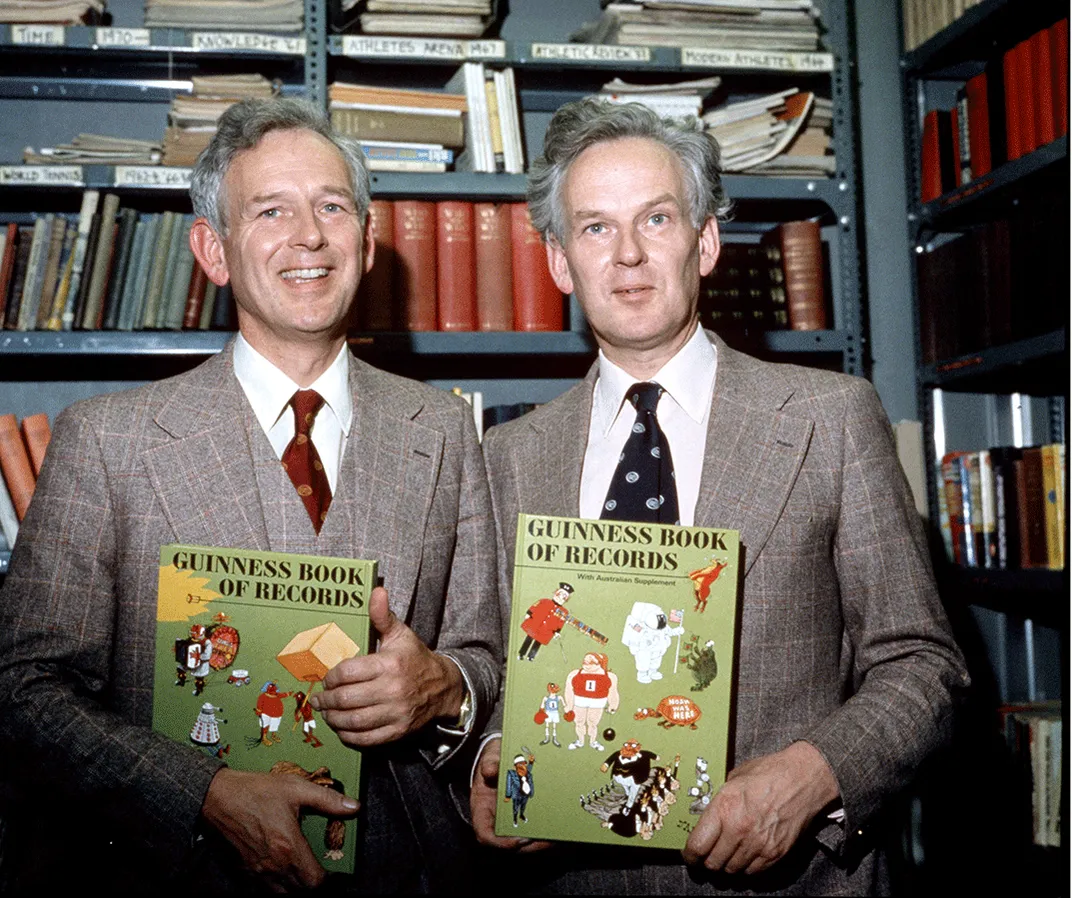The Guinness Book of World Records: A Promotional Stunt That Became an International Phenomenon
The book that makes us ooh and ahh, and squirm in our seats is more than 65 years old
/https://tf-cmsv2-smithsonianmag-media.s3.amazonaws.com/filer/34/e8/34e83f8b-7434-4707-af15-eb3b46224de7/guinnessbook.jpeg)
Guinness World Records has answers to some of life’s most burning questions –Who is the largest living cat? How long is the longest metal coil passed through the nose and out of the mouth? What is the most jelly eaten with chopsticks in one minute?
The book itself holds a record of its own: best-selling annual publication, having sold over 134 million copies in its six-decade run (it celebrates its 60th anniversary this week.) But what is it about the grotesque, the extreme and the unusual that incites such a strong following?
“These superlatives are just things that I think all of humanity have an innate curiosity about. I think we’re all interested in the fastest, the longest, the highest, the shortest,” says Peter Harper, senior vice president at Guinness World Records. “And likewise people want to be known for that.”
It was a curiosity about the fastest game bird that inspired the creation of Guinness World Records. In 1951, Sir Hugh Beaver, the managing director of the Guinness Brewery, missed a shot at a game bird during a hunting trip and wondered aloud if it could possibly be the fastest game bird in existence. A few years later, upon realizing there did not exist a record of superlatives such as the fastest game bird, Beaver enlisted the assistance of two journalists, Norris and Ross McWhirter, to write the first edition of the bestseller. After more than 13 90-hour weeks, the editors finally published the book on August 27, 1955.
At first they only printed 50,000 copies of the argument-settling book to supply to pubs as promotional material for the Guinness brewery. The copies even had waterproof covers to protect them from the inevitable spills at the pubs. But as soon as they grasped the retail possibilities of the material they had produced, the editors sprung into action to publish an edition to release to the public by October that year.

There’s no shortage of record-seekers: The company receives around 1,000 applications every week. And though a few of the records, such as "heaviest pet" or "most hamburgers consumed in one sitting," have been retired for ethical reasons, about 75 percent of the applications are for new records.
Records are frequently challenged and broken, such as most apples bobbed in one minute, but some records have remained on the books since the first iteration of the records in 1955. Adjusted for inflation, Gone with the Wind remains the highest grossing movie at $3.44 billion and John D. Rockefeller’s wealth is unrivaled at $189.6 billion.
No one may ever be able to crack Rockefeller’s record, not even Bill Gates whose net worth rounds out to $79.2 billion, but it’s not the rich and famous who draw readers in droves to the Guinness World Records book - it’s the average Joe doing the extraordinary.
“It’s amazing how many “ordinary people” end up being a Guinness World Records holder,” says Harper.
(For the record: The largest living cat is a 922 pound liger named Hercules. The longest metal coil passed through the nose and out of the mouth is 11 feet, 10.91 inches. And the most jelly eaten with chopsticks in one minute is one pound, six ounces.)
/https://tf-cmsv2-smithsonianmag-media.s3.amazonaws.com/accounts/headshot/DSC_0154.JPG.jpeg)
/https://tf-cmsv2-smithsonianmag-media.s3.amazonaws.com/accounts/headshot/DSC_0154.JPG.jpeg)